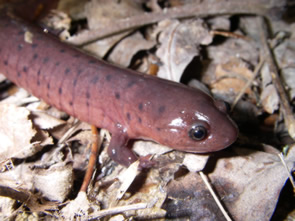
Pseudotriton montanus
Photo by Kristen Cecala
Description: This large, stout salamander may reach lengths of 6-8 inches. Coloration of the body ranges from bright red in some juveniles to dark orangish brown or reddish brown in adults. The back usually contains well separated black spots or flecks. Mud salamanders are often difficult to distinguish from red salamanders, Pseudotriton ruber. Mud salamanders have brown eyes and blunter, shorter snouts while red salamanders have gold or yellowish eyes and slightly longer snouts. Larvae can get very large and typically have a grey or light brown base color. They begin to develop noticeable spotting on the back as they get older. Small mud salamander larvae are often extremely difficult to distinguish from small larval red salamanders and spring salamanders, Gyrinophilus porphyriticus.
Habitat/Range: These salamanders are found across much of North Carolina but are most common at lower elevations. True to their name, mud salamanders seldom stray far from muddy, mucky habitats such as lowland seeps, wetlands, swampy pools, floodplain forests, and muddy streams. These salamanders are often found in burrows or under cover objects.
Diet: These salamanders consume a wide variety of aquatic and terrestrial invertebrates, but are also thought to consume other salamanders.
Reproduction: Females are thought to lay their eggs in underground cavities or hidden recesses in their aquatic habitats. Eggs are laid in late Fall and probably hatch the following Summer. Hatchling salamanders emerge from their eggs with external gills and spend around 2 years as fully-aquatic larvae before transforming into adults. Some females may not be sexually mature until they are 4-5 years old.
Miscellaneous: By evolving bright red coloration similar to that of the extremely toxic red eft (Notophthalmus viridescens), the red salamander benefits from the fact that many predators have learned to avoid bright red salamanders. The red salamanders is also somewhat toxic itself, which helps to reinforce this avoidance behavior in predators.
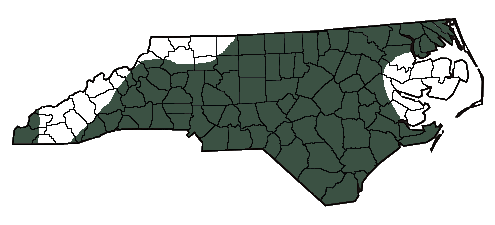
The shaded region represents the range of the mud salamander in North Carolina.
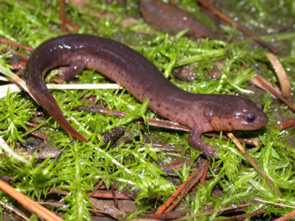
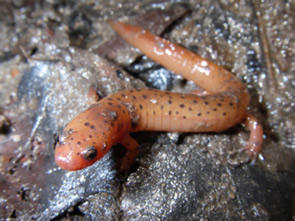
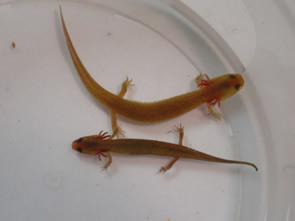
A recently metamorphed mud salamander.
Photo
by Kristen Cecala
Photo by Pierson Hill
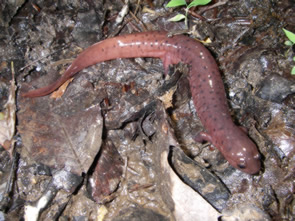
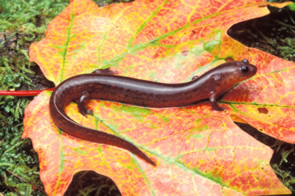
Photo by Kristen Cecala
Photo by D Dennis
